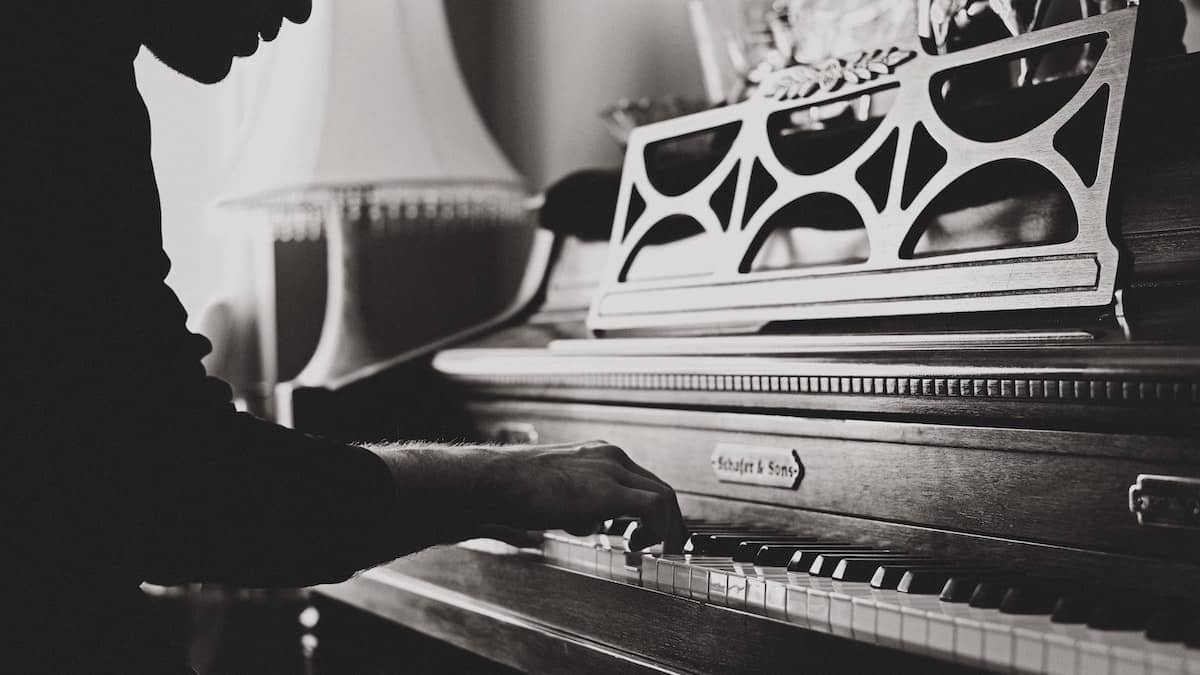Features
What Jazz Pianists Want To Tell Guitarists, Part 2

Once again, pianist Tyrone Jackson provides some invaluable advice for jazz guitarists – with the help of guitarist Dan Baraszu.
In preparation for part two, I decided to give more situational instructions. In doing so, I solicited the advice of one the greatest guitarist in the southeast, Dan Baraszu. I asked him some questions first to see if the answers were in line with what jazz pianists want guitarists to know. When playing with a pianist at the same time he remarked, “Try and play as
Octave riffs from the Wes Montgomery style, which is reminiscent of the Big Band Era, can be employed as well. The riffs create a type of shout chorus that can launch the soloist into a crescendo of energy and ideas. These riffs also will not mess with the pianist’s voicings but could influence the way in which he or she plays—which is a good thing.
Another point that Dan made was the dynamic of playing in either a drummer-less piano trio or an organ trio. The Oscar Peterson model of a piano trio (taken from Nat King Cole) features a guitarist instead of a drummer. Oscar mainly used Herb Ellis in this role and he played mainly quarter notes, accenting 2 & 4. Dan called this “dynamic accenting”. In the case of an organ trio, the organ and electric guitar really mesh well together. An organist is responsible for the bass, chords, sometimes the melody and soloing all at the same time. This requires three appendages moving at the same time. Having a guitarist playing helps bolster the harmony as well as provides consistent rhythm. While Dan Baraszu was a member of famed organist Ike Stubblefield’s group, he remarked, “Ike told me to never stop playing!” Study the greats and listen to the interaction between the two harmonic instruments, this will go far in formulating a plan when dealing with these scenarios.
Our conversation then drifted to the more modern sound and harmonies that piano players employ and how guitarists interpret these harmonies. One such sound is that of “quartal” voicings made famous by pianist McCoy Tyner. In music, quartal harmony is the building of harmonic structures built from the intervals of the perfect fourth and tri-tone. Dan suggests playing these as part of a larger voicing, not trying to forcibly play every note in the chord. As an example, a pianist may be able to play all the notes in a Dmin9, Dmin11, and G13 chord.

It may not be practical to play all the notes at one time on guitar. Instead Dan suggests this:

These voicings contain the 3rd and 7th of the chords and a color tone. Additionally these chords can be interchangeable for a more modern approach over a “modal” type piece. This frees up the guitarist to play these three sounds over D dorian type phrases or G mixolydian type phrases used famously in “So What” and “Impressions”. Below are McCoy Tyner voicings for the same sound:

There are other ways to voice these chords on guitar but it wouldn’t be practical to play at the same time as the pianist all the time because you don’t know when or how they will play them. Still, you should know them.
Another sound that’s popular today is a chord voiced in 4ths in the right hand over a

The 2nd, 3rd, and 4th chords are parallel in nature creating a “
At first glance, and without the aid of the chord changes, this can be analyzed as a Cmin7, no 5th, add b13 or Cmin7#5. A pianist however would not be able to decipher this sound quickly and could lead to some pretty lengthy discussions during your rehearsals. The 4ths sound is really open sounding but pianists also play this sound literally as Ab2/C:

This is the same chord inverted which produces a more “closed” sound.
Dan Baraszu diagrams these types of chords thusly:

Notice how the second and 4th chord in the diagram adds a little spice by adding the G. Functionally, this chord is a “crunchier” version of an Ab/C (Ab, 1st inversion). Try these sounds out and be ready when that “certain” pianist sneaks these voicings into the music! Also, take some lessons with someone who plays these modern sounds. (i.e. pianist Robert Glasper and guitarist Lionel Loueke) Why not take online lessons with Dan?

Detroit born Guitarist/Composer Dan Baraszu received his Bachelors’s degree from the renowned Berklee College of Music, where he majored in Jazz Composition and Arranging, and also received his Master’s degree from the University of Miami with a major in Jazz Pedagogy. Currently, he resides in the Atlanta area where he teaches Jazz Guitar at Emory University and works as a freelance guitarist. Dan’s most recent CD release on Blue Canoe Records was in collaboration with Hammond B3 extraordinaire David Ellington entitled “Organ Trio”.
Tyrone Jackson is a professor at Kennesaw State University where he teaches Jazz Improv I, II, and III, Applied Jazz Piano, Aural Skills III and IV, and facilitates two Jazz Combos. www.tyronejackson.com
Check out the Tyrone’s first article: What Jazz Pianists Want To Tell Guitarists – Part 1
-
Jazz Guitar Lessons2 weeks ago
New JGT Guitar Lesson: Analyzing “Without A Song”
-
Jazz Guitar Lessons4 weeks ago
New JGT Guitar Lesson: Considering “Falling Grace”
-
Artist Features1 week ago
New Kurt Rosenwinkel JGT Video Podcast – July 2024
-
Artist Features3 weeks ago
JGT Talks To Seattle’s Michael Eskenazi




















